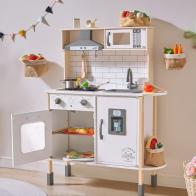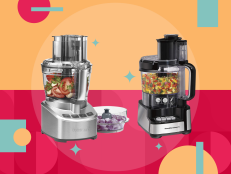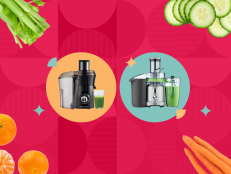6 Best Food Dehydrators, Tested by Food Network Kitchen
We dried fruit leather, jerky and more to find the best dehydrators on the market.

Our Top Food Dehydrator Picks
- Best Overall: Cosori Food Dehydrator
- Best for Beginners: Presto 06300 Food Dehydrator
- Best for Jerky: Tribest Express Food Dehydrator
- Best Value: Nesco Snackmaster Pro Food Dehydrator
- Best Compact: Brod & Taylor Sahara Folding Dehydrator
- Best for Fruits and Veggies: Magic Mill Food Dehydrator
Tested by Taylor Murray for Food Network Kitchen
With a rise in the number of people looking to waste less and save more, there has been a huge boom in sales of dehydrators of all kinds. The grocery store shelves are lined with plenty of commercially available dried foods, but those can be coated in preservatives or made with inferior ingredients. Dehydrating food at home is a great way to control the taste and quality of your food, plus preserve fresh, in-season produce to be used later. (Camping, anyone?)
There are so many different types of dehydrators on the market, which means there is sure to be one that fits your needs. Whether you want to jump right in with a large commercial-grade set-up or just dip your toe in on an entry-level model, there's likely to be the right choice for you. We picked 10 of the best-selling models in the market and put them through a range of tests to see which were worth the splurge, and which were a pass.
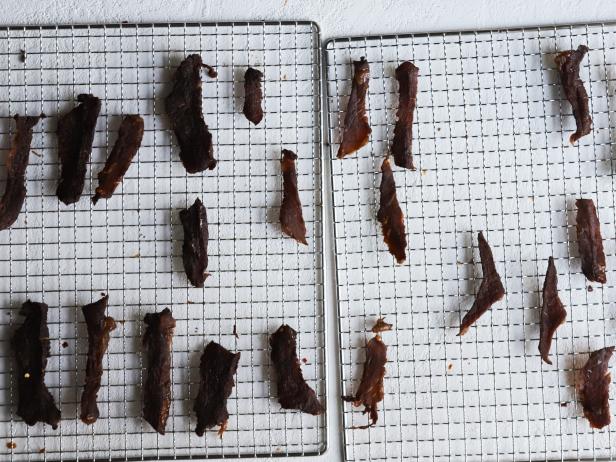
Taylor Murray
What to Know Before Buying a Dehydrator
At a minimum, an ideal dehydrator should be able to dry food evenly and efficiently.
In general, dehydrators fall into two categories: horizontal drying and vertical drying. Across the board, machines with horizontal drying tend to be much more even as the fan blows the air across all the trays simultaneously, though this typically comes in a bulkier design. Units with vertical airflow have more flexibility and some even allow you to add more trays, though the trays closest to the blower will always dry faster and some shuffling may be required on your part.
Capacity comes at a direct cost in terms of size, and the right balance between both is going to differ from person to person depending on the size of their kitchen and what projects they plan to do with this machine.
Aside from the main function of blowing air, a good dehydrator should have intuitive controls and accurate temperature control. The level of noise a machine makes during operation is an important factor for most users, as well as a solid manufacturer's warranty. No one likes to spend a ton of time doing dishes, so dehydrators with dishwasher-safe trays have an edge over those that don't.
The Cosori dehydrator has a bit of everything you want in one of these appliances. It's light and compact enough to easily lift in and out of a cupboard (with the help of handy carrying handles). The controls are simple enough to understand even without the detailed manual, and the auto-shutoff timer lets you dry into the wee hours of the night without worrying about over-drying. This unit comes with fine-mesh screens for small items as well as a fruit leather tray (which released the leather easily without tearing). Every item we tested in this dehydrator came out even and without cracking.
Dehydrating can be complex and some models have an overwhelming amount of controls and settings. The Presto eliminates the confusion by operating at just one temperature, which was perfectly adequate for all of our tests and made dehydrating as simple as could be. Anyone looking to just simply dry food without much care for specific temperatures (and who are capable of using an independent timer) will love this model. The trays collapse smaller for easier storage with an intuitive and simple reversible design.
This model is for serious cooks and packs a huge amount of food on its 11 stainless steel trays. The settings are completely customizable and designed to keep food under a certain desired temperature to avoid nutrient loss. This machine is the absolute best for jerky, as it is the only machine on the market that can go as high as 167 degrees F to prevent food spoilage. The dual-stage drying setting allows you to cook the jerky for a short initial time to avoid food spoilage, followed by a low-and-slow drying process to lock in flavor without over-drying the beef. For the price, we would like to see it come with some more accessories, like a fruit leather tray, but for jerky this is absolutely your best bet.
Nesco is a favorite in the dehydrator world, and it's easy to see why. This affordable unit comes ready out of the box with fruit leather trays and fine-meshed screens for small items. The controls are incredibly simple to use, and the size can be customized based on the project, from as little as two trays to as many as 12. At just $85, it is one of the more affordable units on the market and can dry just as much food as models that are triple the cost.
Some of our tests were a bit uneven, especially on racks farther from the blower. The doughnut shape of the unit can affect the final look of things like fruit leather, and prevent a large amount of long strips of jerky from fitting. That being said, it is still a great dehydrator for the cost and will turn out consistently great results.
The Sahara by Brod & Taylor is the only completely collapsible dehydrator on the market. For those that want a machine large enough to make it worth the effort yet compact enough to store easily, the Sahara is the best bet. Horizontal airflow produces ultra-even drying and a clear, glass window lets you check progress without opening the doors.
The controls on the Sahara are simple to use yet allow for ultimate customization, such as a dual-stage drying that allows you to set a high initial temperature to avoid spoilage followed by a lower one that maintains flavor and texture.
Most dehydrators should be able to dry fruits and vegetables, though some are better than others. The Magic Mill dehydrator packs 10 large trays with wide open holes for constant and even airflow. It also arrives with a host of accessories, such as fine-meshed screens for drying smaller items like blueberries or currants, silicone mitts for grabbing hot trays, and a unique skewer and rack system that no other machine came with. Fruit leather turned out chewy and delicious, without evidence of cracking or uneven drying (even with a recipe with different types of fruit puree).
The controls of the Magic Mill are simple but come with an auto-shutoff feature that is handy for longer projects. There are settings for "raw" mode, which is useful for those trying to keep overall temperature low to maintain the amount of nutrients retained in the foods, as well as a "keep warm" setting. The glass door lets you peek inside at progress without opening the unit, and the interior, exterior and dishwasher-safe racks are easy to clean.
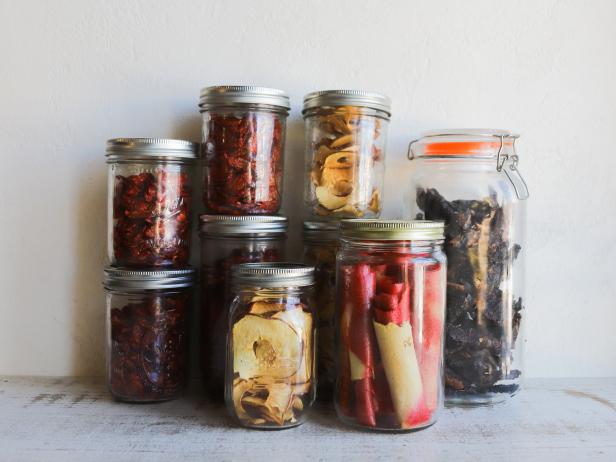
Taylor Murray
Tips for Using a Dehydrator
Achieving the best results when dehydrating food can be tricky, but there are certain things that can help. The best place to start is with the proper preparation. Make sure your food is thoroughly cleaned and free of mold or spoilage before starting. Slice the food as evenly as possible to ensure the most uniform drying.
Everything you place in the dehydrator should be in a single layer and ideally with a half-an-inch to an inch of room in between to allow good airflow. Check on your food often (especially if it's the first time with a new recipe) and, if needed, rotate the trays to help with evenness.
Check the machine's manual for help nailing the time and temperature. The recommended setting for any given type of food may vary from unit to unit. Once your food is done, make sure to store it in an airtight container to maintain quality and prevent moisture from sogging up your stuff.

Taylor Murray
How We Tested
We looked at the top retailers to determine which were some of the best-selling dehydrators on the market and chose 10 based on reviews and rankings. We picked some that were round with a bottom-up blower, some that were round with a top-down blower (both of which are "vertical dehydrators"), and some that were square or rectangular with a fan at the back that blows air horizontally. After making our selections, we got down to the testing.
Part One: Product Intake
In the first assessment, we made notes on each machine's size, weight, price, recommended use and care, if the machine could be considered portable, and what materials it was made of.
Dehydrating food can be somewhat complicated, so the manual that comes with a unit is extremely important. We went through each dehydrator's manual to assess whether it was simple to understand or confusing. We also took note if any special guidance was given for how to successfully dehydrate using that model, including times, temperatures and recipes.
We checked to see if any dehydrators had special claims or interesting features, like extra accessories or a unique design. Extra points were awarded to models that came with everything you need to get started making the basics, such as a fruit leather tray.
Part Two: Cooking
We cooked four different types of food in each dehydrator: apple rings, grape tomatoes, fruit leather and beef jerky. For the apple ring test, we sliced two large apples (about one pound) crosswise into 1/8-inch-thick rounds using a mandoline for accuracy. After removing the core, the apples got a bath of lemon juice and water before draining and dehydrating according to manufacturer instructions. In general, we noticed that dehydrators with horizontal airflow were more even and dried the apples faster. On vertical models, the trays farthest from the blower took longer to dry.
For the grape tomatoes, we sliced one pint (about 10 to 12 ounces) in half. We laid them cut side up in a single layer on racks and dehydrated them according to manufacturer instructions.
For the next test, we made fruit leather puree and dried it according to the machine's directions (if the machine came with a fruit leather tray or we could order one). If the machine gave no directions, we dried the leather at 135F until fully dried.
The final test was beef jerky. After marinating the beef for a few hours, we laid out two pounds in each machine and dried per the manufacturer's directions. Most advised using the highest possible temperature to avoid spoilage. Some of the lower-wattage machines advised baking the beef in the oven to kill harmful bacteria first, which we did not do so we could have consistent testing results. Always follow USDA guidelines when making jerky at home.
Part 3: Cleaning
As we said before, no one likes to spend a ton of time doing dishes. The racks of some dehydrators can be tricky to clean and most will have sticky residue after hours of dehydrating things like jerky or fruit.
We also took notes on how easy or difficult it was to clean the dehydrator itself. For some models, the base is also the machine. This type of dehydrator is tricky to clean without getting water into the machine, especially when trying to remove baked-on jerky marinade. Vertical dehydrators with top-down blowers were superior in this sense, as the base is usually dishwasher-safe (if the racks are) or easy to soak. All of the horizontal dehydrators we tested came with a drip tray (some of which double as the fruit leather tray), which made clean-up easier than scrubbing out the inside of the appliance.


















